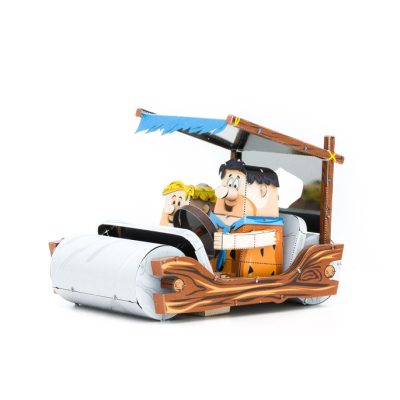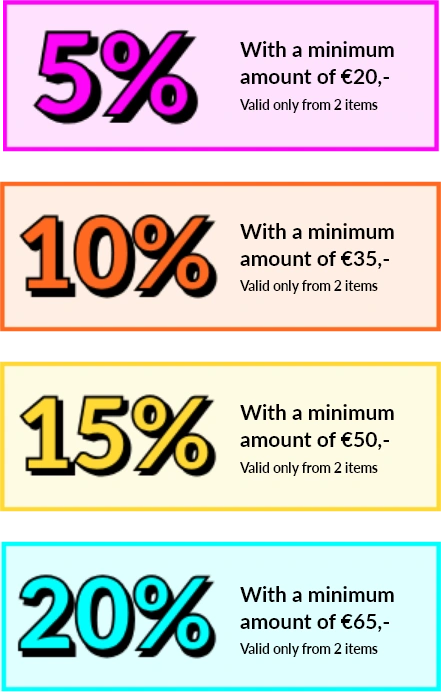With a minimumamount of €20.
Valid only from 2 items
With a minimumamount of €35.
Valid only from 2 items
With a minimumamount of €50.
Valid only from 2 items
With a minimumamount of €65.
Valid only from 2 items

Frequently asked questions (FAQ)
Puzzles
The Dowdle Folk Art “Happy Days” puzzle, with a whopping 60,000 pieces, is currently the puzzle with the most pieces.
The answer is: Yes, it is possible to frame a jigsaw puzzle. There are glue and framing kits available specifically for jigsaw puzzles that you can use to glue and then frame your puzzle.
There are different types of jigsaw puzzles, depending on how the pieces fit and how they are designed such as: Classic jigsaw puzzles, 3D puzzles, wooden puzzles, children’s puzzles, picture puzzles, special puzzles and escape puzzles.
The fastest way to make a jigsaw puzzle is to first sort all the pieces by color and shape, lay out the edges and group pieces that seem to fit together. Use the picture on the box so you know what the puzzle is supposed to look like and start with the larger and more striking pieces. Stay focused and patient while putting the puzzle together.
To learn puzzles, it is important to take a step-by-step approach. Start with a puzzle with not too many pieces and sort them by color or pattern for more overview. Start by laying the border and then work from the outside in and from the top down. Find pieces that match based on color, shape and pattern. Take regular breaks to avoid fatigue. Stay patient and focused, and enjoy the process and the satisfaction when the puzzle is complete.
Puzzling is good for the elderly because it provides mental stimulation, improves memory and concentration, reduces stress and encourages social interaction.
Puzzles are great for children because they can improve various skills. Jigsaw puzzles, speed cubes, maze balls, pattern puzzles, tangrams and construction puzzles such as 3D puzzles and construction puzzles are all useful ways for children to promote cognitive skills, fine motor skills, social interaction and self-confidence. Solving different types of puzzles can stimulate creative thinking, logical reasoning, spatial awareness, concentration and problem-solving skills in children.
Puzzling trains problem-solving skills, spatial awareness, concentration and attention, memory and hand-eye coordination. It helps develop cognitive skills and motor skills, and can help improve focus and the ability to complete tasks.
For children between the ages of 6 and 8, there are puzzles with 25 to 100 pieces, ideal for beginners. For slightly older children between the ages of 9 and 12, there are puzzles with 100 to 300 pieces. Teens between the ages of 13 and 16 can challenge themselves with puzzles from 300 to 500 pieces. And for adults ages 17 to 99, there are puzzles with 500+ pieces for hours of puzzle fun. These are general jigsaw puzzles. 3D puzzles and puzzles with special shapes offer a different challenge so the age range for puzzling may be different.
Are you enjoying putting your puzzle together and you find out that a piece is missing? Super frustrating, of course. But not to worry, we have some handy tips here that will hopefully help you find the missing piece again. First, start by looking carefully on the ground around where you put the puzzle. Sometimes the piece may have gone there unnoticed, especially if the puzzle has been moved. Is it possible that your cat ran off with it? In that case, the piece could really be anywhere in the house, making it a true Sherlock Holmes mission.
If you are absolutely sure that the piece is not in the house, you can always contact us and send us a picture of the complete puzzle, showing the missing piece clearly. That way, we can make a request on your behalf to the manufacturer to request the missing piece. We understand that you are eager to puzzle on quickly, but keep in mind that the process may take several weeks. This is because many of our manufacturers are located abroad.
Especially For You





